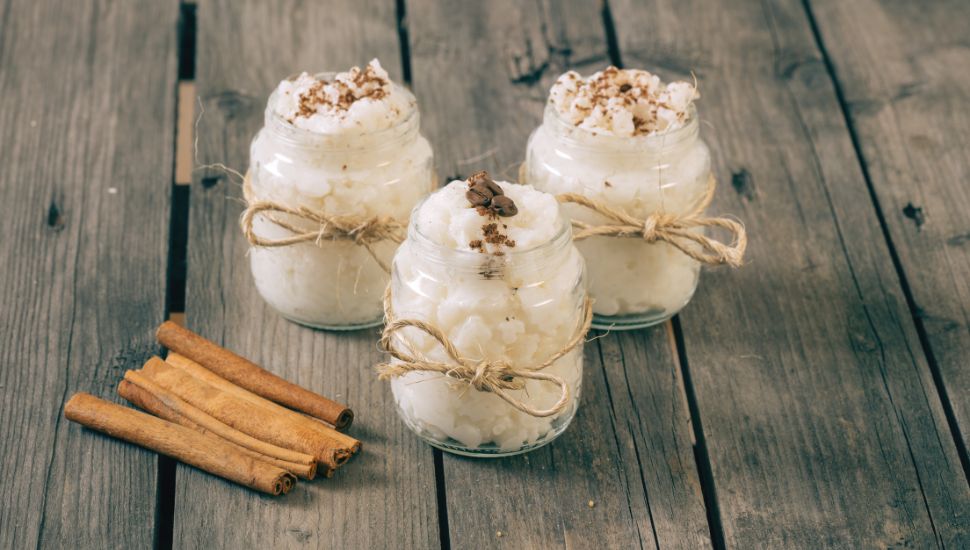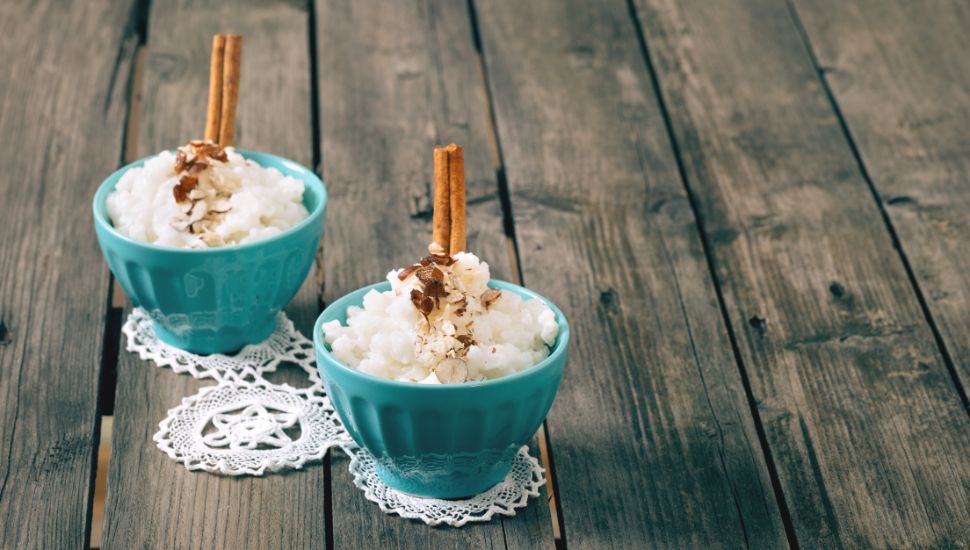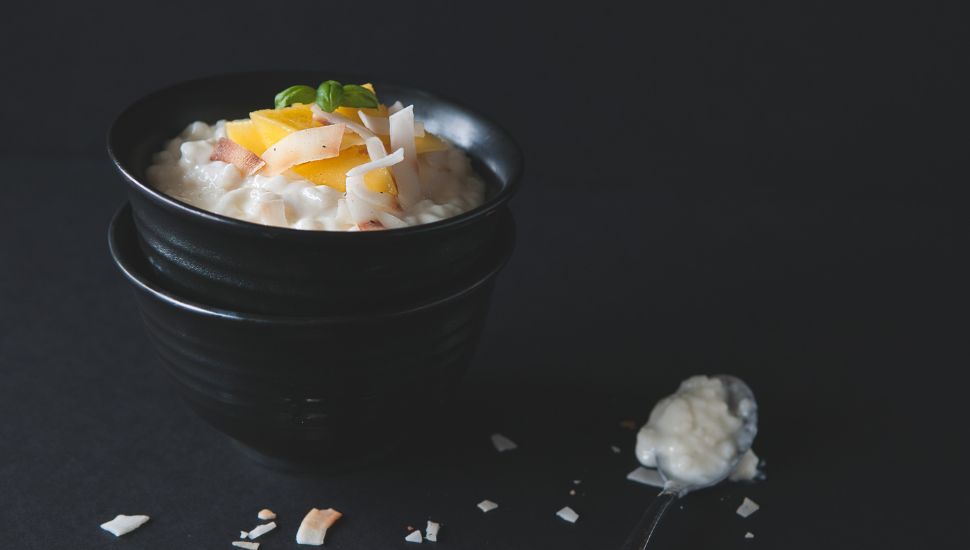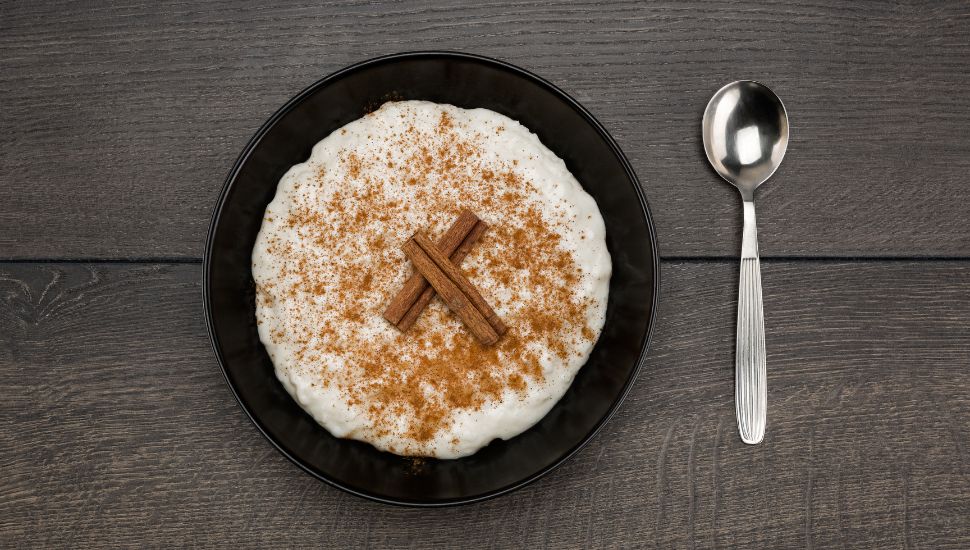
Rice puddings are absolutely divine! They are such a versatile dish because you can add or subtract anything in them to make them fit your taste.
However, the only drawback of rice pudding is that they are time-consuming to make, which is why if you like to eat it frequently, the good idea is to make big batches and freeze them so that you can enjoy them later.
This dish is such a fantastic comfort food that can take away all the worries just with one spoonful; this dish is the epitome of deliciousness, which is why so many people are crazy about it.
Like any other dish that you can prepare in your kitchen and then freeze to extend its life; similarly, rice pudding can be prepared and then frozen for long durations so that you may satisfy your rice pudding craving any day and anytime you want.
For me, I rarely have any leftover rice pudding because it gets devoured at the end of the day. But, when I want to freeze it, I make a batch just for freezing, and then it goes straight to the freezer for later.
There is no day when I wouldn’t eat rice pudding, but since I have such a busy schedule, there is no way to cook it every day or every other day.
That is why I was thinking, what can I do to always have a batch of rice pudding hidden somewhere? And then, one golden day, I put some leftover rice pudding in the freezer because we were going out of town for 2 weeks.
I was afraid that it will be completely ruined, but I had no other option. But, to my surprise; it tasted just like I made it fresh!
So, do you want to know how you can successfully freeze it and save some time in your busy schedule by always having rice pudding in the freezer? If yes, then this blog is for you. Let’s start!
Can You Freeze Your Rice Pudding?
Rice pudding freezes really well, so we can freeze it quickly. But, with the exception of raisins, as they become super hard, personally, I like hard raisins.
But, if you don’t like hard and chewy ones, you can cook your rice pudding (specifically for freezing) without raisins and add them while reheating your dessert.

Apart from this, the consistency of the pudding might get altered a bit, which is entirely normal because dairy products become dry when they are frozen.
But, even that is not an issue because if you want a runny mixture, you can add a bit of milk or water to bring it back to its original consistency when you take out your pudding to reheat.
Related article: Can you freeze wild garlic?
How to Freeze Rice Pudding?
Are you ready to freeze your rice pudding? Before you think about freezing it, you should have leftover, or a fresh batch of rice pudding cooled at room temperature.
But, once the pudding cools, you shouldn’t leave it on the counter and get it to the freezer as fast as possible to stop any bacteria from growing on it.
Follow these steps to freeze your pudding successfully.
#1: Once you have made your pudding specifically for freezing, then you should take it out in airtight containers so you may freeze them easily.
From the stove, transfer your pudding into an airtight container and let it cool. If you want, you can also use storage bags, but since the pudding is liquidy, I suggest against it.
I also suggest that if you are making a big batch of rice pudding, then you don’t freeze it in one container or bag because then you will have to defrost the whole thing, instead freeze it in separate containers; this way, you can take out as many containers you want without having any leftovers.
#2: Seal the container or freezer bag shut after removing excess air, but leaving some room for expansion. Your pudding should be completely sealed to keep the moisture and aroma inside. Label the bag or container with the freezing date
#3: Finally, put your container or bag in the freezer and let it freeze. That is it! Now you have a delicious dessert in your freezer for whenever you want to eat it.
Pros and Cons for Freezing Rice Pudding?
Now you know that you can freeze rice pudding, it is time to learn whether you should do it or not. Will freezing it proves beneficial for you or not? Let’s take a look at some of its pros and cons.
Pros:
- Freezing rice pudding proves to be very convenient for later because it is a time-consuming dish that requires a lot of time and hard work to prepare. So, whenever you have time, you can make a big batch and freeze it for later use.
- Frozen rice pudding works great if you suddenly have guests over and no time to make a sweet dish.
- They stay 98% the same as fresh rice pudding. Its texture, aroma, and taste are similar to fresh rice pudding.
- It freezes really well.
Cons:
- The taste, texture, and consistency get changed a bit. The texture becomes a bit grainy, and the consistency becomes thick. This is a common problem with freezing dairy products.
- The raisin in the pudding becomes hard and chewy.
- It doesn’t freeze well in freezer bags because it is liquid.
There were pros and cons, but the cons are not so dangerous to stop you from freezing the pudding. I think you should still freeze it.
More guides:
- How to freeze runner beans? (easy steps)
- Can you freeze camembert cheese?
- Can you freeze vodka sauce? (the right way)
How Long Is Rice Pudding Good For?
If you freeze the pudding precisely as I told you, then it will stay perfect for 3 months in the freezer. However, eating it sooner than three months is a good idea to enjoy it at its best.

The longer you wait to eat it, the more deteriorate its taste will get. And this is exactly why you should put the freezing date on your rice pudding when you are freezing it.
I don’t know about you, but my frozen rice pudding doesn’t even last a whole month because my family loves it so much!
Does Rice Pudding Freeze Well?
For a dairy-based product, rice pudding freezes really well. Because it is made of two things with a track record of freezing poorly.
But, the pudding only freezes well when you freeze it in an airtight container or box, away from foreign air and moisture or smells. Because if you don’t seal it properly, get ready to eat a ruined rice pudding.
But if you follow the steps, then nothing can stop you from having the best and the most delicious rice pudding; straight out of the freezer.
How Long Does Rice Pudding Last In The Fridge?
Rice pudding can last up to a week in the fridge, and that too if you put it in the refrigerator in a proper airtight container.
However, if you put it in an open container in the fridge, it will dry out, and its top layer will form a crust. After that, its milk might start to go bad, and fungus will form on it.
If you want to store your pudding for a longer duration, then I suggest you freeze it instead of putting it in the fridge.
How To Defrost Rice Pudding?
There are a few ways to defrost your rice pudding, like on the stove, in the fridge overnight, or in the microwave. However, you should not leave it on the kitchen counter to thaw because it will start to go bad as it thaws.
1: Overnight in the fridge
The best way to defrost your rice pudding is by taking it out a day before you want to eat it and leave it in the fridge to defrost slowly. This way, it will defrost while staying cold which will stop it from going bad
2: Microwave it
If you forget to take out your pudding a night before, then you can simply take it out of your freezer and pop it in the oven. Open the container and cover it with an oven-safe cover, then use the defrost function of your oven to thaw your pudding.
3: On the stove
The final way of defrosting it is by using the stove; place your pudding in a saucepan and let it defrost on low heat. To keep the consistency intact, you can add additional milk or cream to it. Mix continuously to thaw and heat it thoroughly.
Can You Refreeze Rice Pudding?
You can refreeze your rice pudding, but you shouldn’t do it because it is made with cream or milk, both of them have a high chance of going bad with slight mistreatment.

If the milk of the pudding goes bad, it can make the pudding awful! Apart from this, freezing rice has its own disadvantages, so you should probably not tread on these grounds.
Instead, you can rewind a bit and freeze your pudding in portions instead of as a whole. This way, you won’t have to defrost the whole thing, and you can take out as many portions as you want and as you can eat after defrosting. No leftovers!
Final Verdict:
This concludes our blog on the fact that rice pudding can indeed be frozen, but you should do so with proper steps to stop the pudding from becoming awful.
Always remember to keep it in an airtight container or bag and never leave it on the counter for more than half an hour.
So, whenever you have extra time on your hands and the right ingredients, make an extra batch of rice pudding for devouring later.
Now, you can freeze your rice pudding and satisfy your cravings whenever you like. Happy freezing!
Frequently Asked Questions
What happens when you freeze rice pudding?
Nothing happens! The pudding freezes perfectly. It is remarkable how a rice and milk dish can freeze so well because both these things have a history of freezing poorly.
But, if you freeze the pudding in an airtight container or freezer bag, it will stay as fresh as a newly made rice pudding. Freeze it properly to enjoy it properly!
Can you freeze clotted cream rice pudding?
Yes, you can freeze clotted cream rice pudding in an airtight container or freezer bag. However, you will notice that once you defrost it, the pudding won’t be as creamy as it was when freshly made.
Its texture will be a bit grainy, and overall it will be a bit dry. However, you can add cream to it while it defrosts to make it creamy again.
Can you freeze rice pudding made with cream?
Yes, rice pudding made with cream can be frozen, but you should freeze it in an airtight container or bag to keep it moist and fresh.
However, it might lose some of its consistency and texture due to freezing, but that won’t be noticeable much.
Can you freeze rice pudding made with coconut milk?
Yes, you can freeze rice pudding with coconut milk in it. In fact, if you know that you will freeze a batch of rice pudding, then use coconut milk instead of regular milk because coconut milk freezes better than other milk.
It doesn’t lose its consistency and doesn’t make the pudding dry. It is a great alternative to regular milk, especially for rice puddings.
References:









